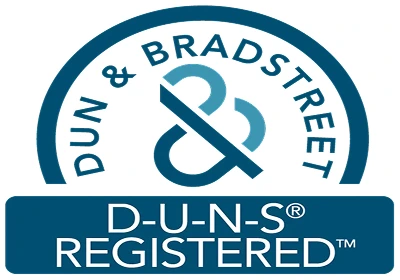Aerospace and Defense Published Insights
Published Date : 22 Jan, 2026
Airport Charging Stations Market Size and Forecast – 2025 – 2032 The Global Airport Charging Stations Market size is estimated to be valued at USD 1.25 billion in 2025 and is expected to reach USD 3.4 billion by 2032, exhibiting a compound annual growth rate (CAGR) of 14.8% from 2025 to... View more
Published Date : 22 Jan, 2026
The global military training aircraft market has witnessed significant growth in the past few years due to increasing defense budgets of major countries and proliferated geopolitical instabilities across the world. Military training serves as a backbone for any nation... View more
Published Date : 22 Jan, 2026
The global ocean drones market is estimated to be valued at USD 8.70 Bn in 2025 and is expected to reach USD 24.90 Bn by 2032, exhibiting a compound annual growth rate (CAGR) of 16.1% from 2025 to 2032. The global oce... View more
Published Date : 22 Jan, 2026
The U.S. law enforcement training market is estimated to be valued at USD 3.97 Bn in 2025 and is expected to reach USD 5.40 Bn by 2032, exhibiting a compound annual growth rate (CAGR) of 4.5% from 202... View more
Published Date : 22 Jan, 2026
Global Satellite Data Services Market is estimated to be valued at USD 14.44 Bn in 2025 and is expected to reach USD 55.17 Bn by 2032, growing at a compound annual growth rate (CAGR) of 21.1% from 2025 to 2032. ... View more
Published Date : 22 Jan, 2026
Cloud seeding is a weather modification techniques that aims to enhance precipitation by dispersing seeding agents into clouds. It originated in mid-20th century as a response to water scarcity and drought conditions. The process typically involves introduc... View more
Published Date : 22 Jan, 2026
The global space battery market is estimated to be valued at USD 4.35 Bn in 2025 and is expected to reach USD 7.12 Bn by 2032, exhibiting a compound annual growth rate (CAGR) of 7.3% from 2025 to 2032. The global spac... View more
Published Date : 22 Jan, 2026
The Global Ads B Market is estimated to be valued at USD 1.84 Bn in 2025 and is expected to reach USD 6.29 Bn by 2032, exhibiting a compound annual growth rate (CAGR) of 19.2% from 2025 to 2032. The g... View more
Published Date : 22 Jan, 2026
The global avionics market is estimated to be valued at USD 54.28 Bn in 2025 and is expected to reach USD 92.43 Bn by 2032, exhibiting a compound annual growth rate (CAGR) of 7.9% from 2025 to 2032. T... View more
Published Date : 22 Jan, 2026
The global full flight simulator market is estimated to be valued at USD 6.93 Bn in 2025 and is expected to reach USD 10.28 Bn by 2032, exhibiting a compound annual growth rate (CAGR) of 5.8% from 202... View more
Published Date : 22 Jan, 2026
The global marine hull insurance market is estimated to be valued at USD 3.57 Bn in 2025 and is expected to reach USD 4.99 Bn by 2032, exhibiting a compound annual growth rate (CAGR) of 4.8% from 2025... View more
Published Date : 22 Jan, 2026
Overview Stun Gun form an integral part of a lavatory, owing to the requirement to flush discharged waste matter. It uses water or vacuum to force waste matter down the pipeline connected to the disposable location. These consist of water tank, mechanical components, and electronic sensors and comp... View more
Published Date : 22 Jan, 2026
The aircraft cabin is the part of the aircraft in which passenger travels. The primary objective of the aircraft cabin interior is to provide comfort and convenience to passengers. The aircraft cabin interior comprises components and systems that are used inside the c... View more
Published Date : 22 Jan, 2026
The global aerospace and defense market is estimated to be valued at USD 846.94 Bn in 2025 and is expected to reach USD 1,470.43 Bn by 2032, exhibiting a compound annual growth rate (CAGR) of 8.2% from 2025 to 2032. T... View more
Published Date : 22 Jan, 2026
The Global Artillery Ammunition Market is estimated to be valued at USD 5.46 Bn in 2025 and is expected to reach USD 7.89 Bn by 2032, exhibiting a compound annual growth rate (CAGR) of 5.4% from 2025 to 2032. Artiller... View more
Published Date : 22 Jan, 2026
The Global Reaction Wheel Market is estimated to be valued at USD 649.6 Mn in 2025 and is expected to reach USD 1,218 Mn by 2032, exhibiting a compound annual growth rate (CAGR) of 9.4% from 2025 to 2032. The market includes precision mechanical ... View more
Published Date : 22 Jan, 2026
A strong, optically transparent material that is particularly resistant to projectile penetration is known as bullet-resistant glass, ballistic glass, transparent armor, or bulletproof glass. It is not completely impenetrable, as is the case with all materials. It typ... View more
Published Date : 22 Jan, 2026
The Global Rescue Robot Market is estimated to be valued at USD 29.63 Bn in 2025 and is expected to reach USD 80.27 Bn by 2032, exhibiting a compound annual growth rate (CAGR) of 15.3% from 2025 to 20... View more





